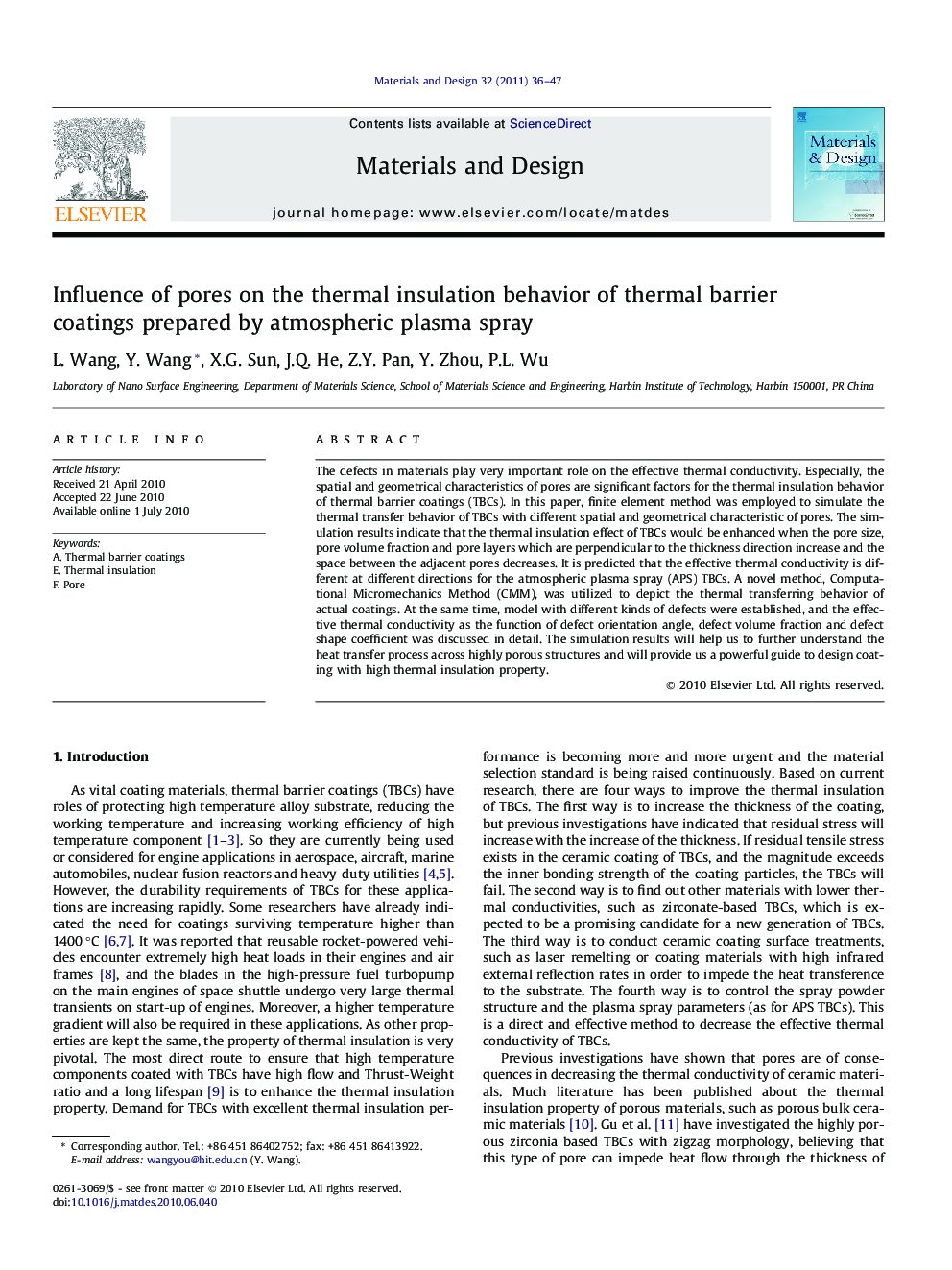| Article ID | Journal | Published Year | Pages | File Type |
|---|---|---|---|---|
| 831692 | Materials & Design (1980-2015) | 2011 | 12 Pages |
The defects in materials play very important role on the effective thermal conductivity. Especially, the spatial and geometrical characteristics of pores are significant factors for the thermal insulation behavior of thermal barrier coatings (TBCs). In this paper, finite element method was employed to simulate the thermal transfer behavior of TBCs with different spatial and geometrical characteristic of pores. The simulation results indicate that the thermal insulation effect of TBCs would be enhanced when the pore size, pore volume fraction and pore layers which are perpendicular to the thickness direction increase and the space between the adjacent pores decreases. It is predicted that the effective thermal conductivity is different at different directions for the atmospheric plasma spray (APS) TBCs. A novel method, Computational Micromechanics Method (CMM), was utilized to depict the thermal transferring behavior of actual coatings. At the same time, model with different kinds of defects were established, and the effective thermal conductivity as the function of defect orientation angle, defect volume fraction and defect shape coefficient was discussed in detail. The simulation results will help us to further understand the heat transfer process across highly porous structures and will provide us a powerful guide to design coating with high thermal insulation property.
